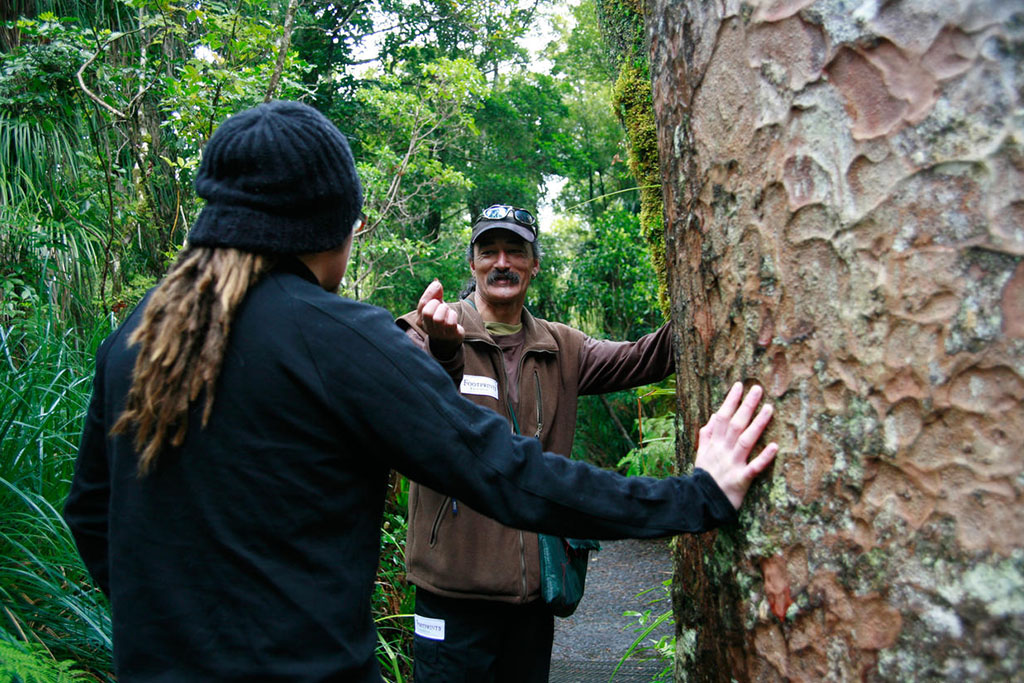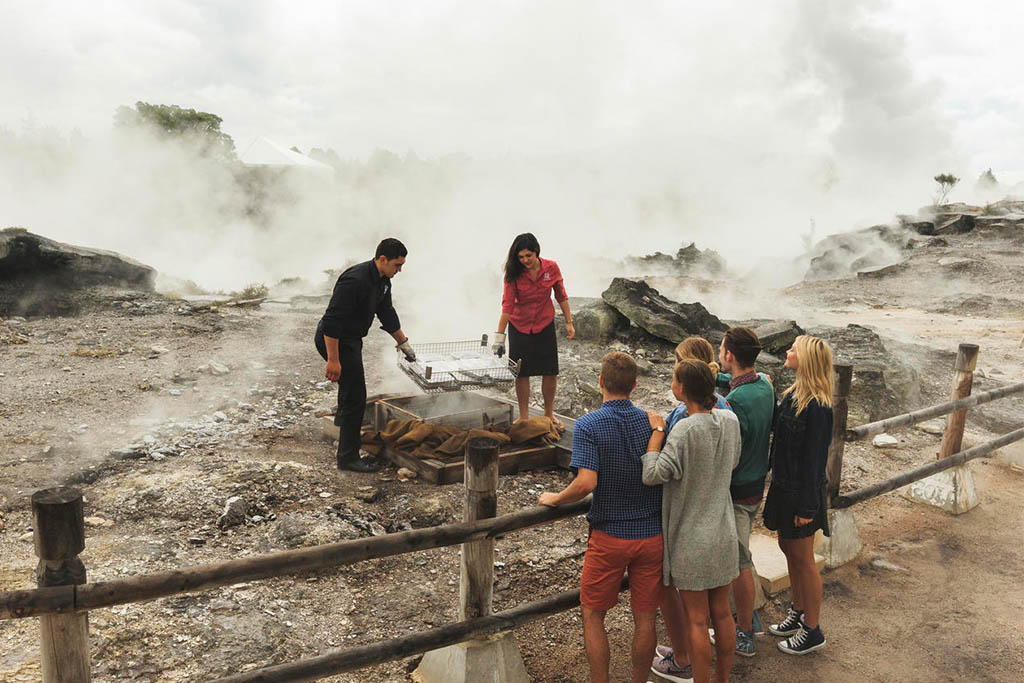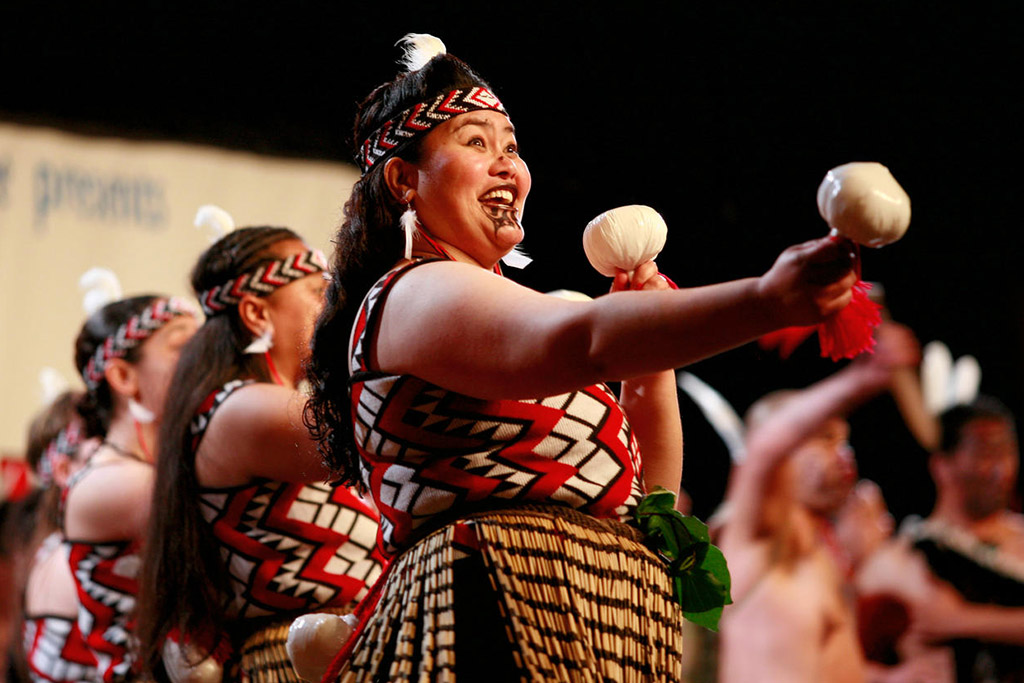What do you think of when we say the words Maori Culture? The first image that comes to mind for many would include the All Blacks performing the haka, or maybe some famous scenes from kiwi cinema such as Boy and Whale Rider.
But Maori culture goes far deeper than what’s seen in the media and plays an important part of everyday kiwi life. Maori are the indigenous people of Aotearoa, the tangata whenua (people of the land) and rich elements of the culture are integral in maintaining our unique kiwi identity.
Here are 5 things you didn’t know about Maori culture, and how you can experience them in Rotorua, New Zealand.
Maori are guided by the principals of Manaakitanga and Kaitiakitanga
We are guided by the principals of Manaakitanga (hospitality) and Kaitiakitanga (guardianship). Manaakitangi is about extending hospitality and kindness to guests and always acting with mutual respect. Expect the people of Aotearoa to welcome you with warmth and friendship as you travel around the country; many would love to share with you the tales of their regions.
On the flipside, kaitiakitanga is about guardianship of the natural environment. It is a philosophy central to the the Kaitiaki way of life, and local kiwis think very seriously about their responsibility for the natural world. Learn more about kaitiakitanga as you hike sacred Mt Tarawera with us. Learn about the history of the mountain and the efforts to protect it while taking in breath-taking views of the surrounding area.

Hangi is the traditional method of cooking
Mā tāu rourou, mā tāku rourou, ka ora ai te manuhiri / By your food basket and my food basket, the visitors will be nurtured.
Sharing food in New Zealand is an important part of embracing the spirit of Manaakitanga and many cultural traditions here revolve around food. Our Maori hangi (earth oven) in particular is the traditional type of cooking, where food is wrapped in damp cloths and wire baskets (traditionally leaves) and buried deep within the earth on top of hot rocks and coals. Trapped beneath the soil, the food is steamed and slow-cooked to smoky perfection.
Hours later when the food is brought to the surface you’ll know it was worth the wait. Experiencing a hangi is a great way to socialize with friends and family while also interacting with the Maori culture. Try one at Te Puia after you’ve finished your Mt Tarawera hike.

Maori is one of the national languages
In New Zealand there are three official languages – English, New Zealand sign language and te reo Maori. While English is most commonly spoken, you will hear Maori often – especially through Maori place names throughout New Zealand, and also when rafting, sledging or hiking with Kaitiaki. The language is spoken by around 23 percent of New Zealanders and is currently undergoing a revival with the help of initiatives such as Maori language week, immersive Maori schools and Maori radio and television stations.
Visiting a Marae (meeting grounds) in Rotorua and participating in a cultural experience is the best way to hear fluent Maori being spoken or sung. And why not practice a little Maori language while you’re there? “Kia ora” is commonly used to say hello and thank you (we’ll teach you the proper pronunciation when we meet you!)
Legend states that Aotearoa was fished from the sea
Maori is an oral culture – where knowledge, histories and folklore are passed down through generations via spoken word. One story that has withstood the test of time is that of Maui – the gifted demigod of Polynesian mythology.
The traditional Maori tales state that Maui cast his magic hook into the ocean and fished up the North Island of Aotearoa, New Zealand. Storytelling, and especially it’s interpretations in the great outdoors are a fabulous way of combining New Zealand’s natural landscapes and histories into one unique experience. Learn the local myths and folklore in each region you visit. All of our friendly guides will tell myths and legends on a Kaitiaki experience.

Poi were used to strengthen men’s arms for battle
In modern Maori culture, poi is practiced by women as part of kapa haka – traditional Māori performing arts. However this wasn’t always the case. Poi were originally created in order to improve males coordination and arm strength before battle. It wasn’t until much later that it was adopted by woman to increase their dexterity for weaving before becoming part of these cultural performances. Nowadays you will also see them appropriated by fire-loving performance artists at festivals and gatherings throughout the world too.
You can visit a marae and witness kapa haka (along with the infamous haka seen in All Blacks matches) at Te Puia as part of our guided tours. Find out more here.




